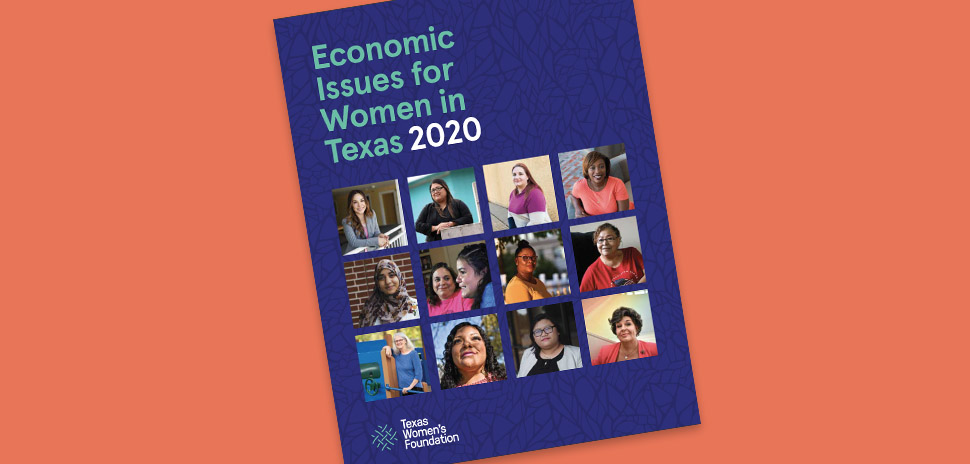Texas Women’s Foundation has released the findings of its Economic Issues for Women in Texas 2020 report, which examines the economic status of Texas women in regard to gender, race, and ethnicity. It showed that women make up half the population in the state—a significant part of the workforce—but still face challenges in regards to economic security.
When it comes to key indicators like income, health insurance, college loan debt, and housing stability, there’s a gender disparity. Though the population of Texas women has grown 19 percent in the last decade, women are still the face of poverty in Texas, according to TXWF.
There are 14 million women and girls in the state, with women of color making up the majority.
“While Texas women experience poverty at higher rates than men, two in 10 Hispanic or Black women experience poverty, a rate twice that of White women,” TXWF said in its report. “Single-mother-led households are almost two times more likely to experience poverty than single-father-led households.”
Plus, around one in six women still lack sufficient financial resources, resulting in more than 2.3 million in Texas earning less than the poverty threshold. That means it’s hard for them to successfully care for themselves and their families.
And that’s especially apparent when it comes to a financial shield, like health insurance.
Texas women are twice as likely to be uninsured compared with other women across the country, according to TXWF—more than 1.9 million adult women in the state are living without health insurance coverage.
These statistics are especially important considering around 60 percent of Texas women are breadwinners or co-breadwinners for their households. And the gender wage gap hasn’t budged.
According to TXWF, for every hour that women in Texas work, they earn $2.83 less than a male counterpart (based on median hourly wages). On average, full-time female workers in the state earn $10,136 less a year. The gap is even larger when it comes to Black and Hispanic women.
That’s not to say women aren’t under-qualified, either. 1.4 times as many women in Texas completed public college in 2018. Not only are they underpaid, but TXWF points out that they also sit at the center of the student debt crisis: Women hold nearly two-thirds of the outstanding student debt in the U.S., which equates to about $929 billion.
READ NEXT Texas Women’s Foundation Adopts ‘Gender Lens’ Investment Strategy With $10.5M Fund
That causes a trickle-down effect to economic security. TXWF says more than 30 percent of families led by women are burdened by Texas housing costs, with Black women facing the highest burden in this area.
When it comes to single women and mothers, that’s especially apparent—they must spend more than 50 percent of their income on housing.
Though 63 percent of mothers are working, full-time child care is still just as expensive as college at more than $8,000 a year in 2019.
“According to the U.S. Department of Health and Human Services, child care is affordable if it costs no more than 7 percent of a family’s income,” TXWF notes. “By this standard, only 16 percent of Texas families can afford year-round infant care.”
Texas Women’s Foundation makes recommendations
TXWF dives a lot deeper into these areas—education, child care, health insurance, and housing—in its full report.
Economic Issues for Women in Texas 2020 also identifies opportunities for change and makes policy recommendations. This year’s broad summary was:
Equal Pay: Working women deserve equal pay.
Education: Expand TEXAS (Toward EXcellence, Access, and Success) grant and Promise programs to make college more affordable.
Child Care: Fund full-day pre-K with community partners; expand or create family-friendly leave and work policies.
Health Insurance: Expand Medicaid, especially for new mothers; include earned paid sick time as part of a job; support family leave policies.
Housing: Prioritize transitional housing for domestic violence survivors; improve tenant protections and provide legal aid funding.
“Economic Issues for Women in Texas examines both policies and practices at the state level, while identifying areas where innovation and investment can help strengthen women and their families,” Roslyn Dawson Thompson, president and CEO of Texas Women’s Foundation, said in the report. “We encourage our Army of Advocates across Texas to use the study—and its platform of specific recommendations and potential actions—with lawmakers, as well as business and community leaders to help shape policies and practices that impact women and girls. We hope the research creates a shared understanding and motivates a shared commitment to drive solutions that support women and their families, and build a stronger Texas for us all.”
The study is produced by Texas Women’s Foundation based on research conducted by Every Texan. Sources include U.S. Census Bureau data, federal and state agency data, studies by policy organizations, and academic research.
![]()
Get on the list.
Dallas Innovates, every day.
Sign up to keep your eye on what’s new and next in Dallas-Fort Worth, every day.

































